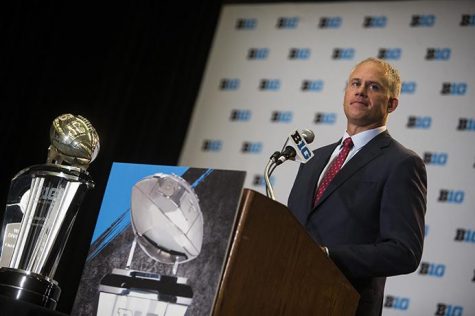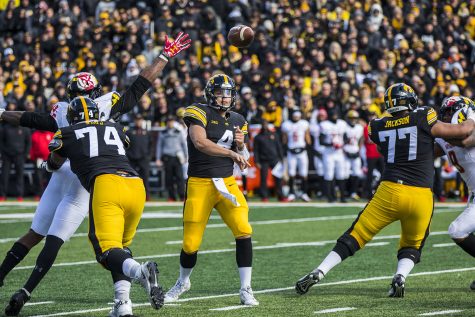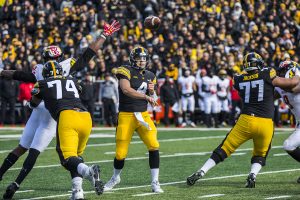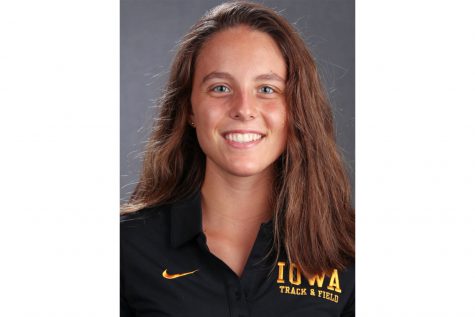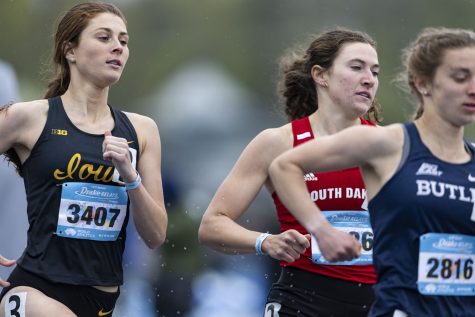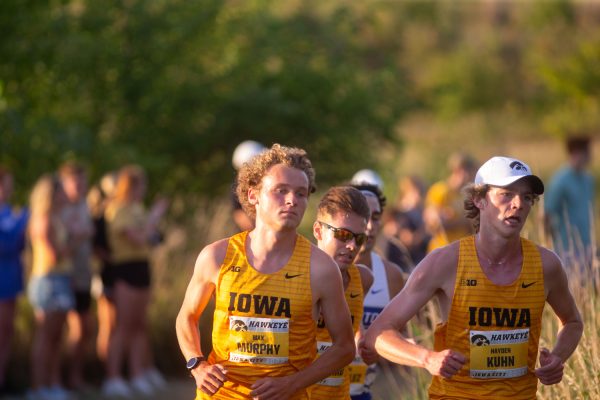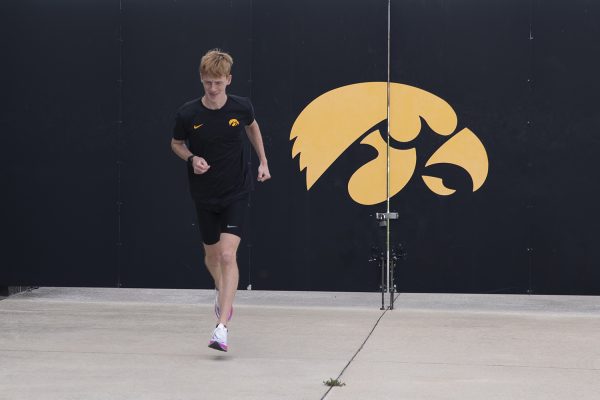Hasenbank’s harriers break out from the bottom of the Big Ten
After years of placing in the bottom of the Big Ten, Iowa finally broke the curse.
The Hawkeyes begin the Women’s 4k race at the Hawkeye Invitational on Friday, August 31, 2018 at Ashton Cross Country Course. The Hawkeyes were defeated by Iowa State 56 to 24.
October 30, 2018
The Big Ten Championships mark the start of postseason races for Iowa cross-country. For years, Iowa’s results in this meet have wound up with bottom-tier placings.
The last time Hawkeye women finished in the top half of the field was in 2011, when the squad finished sixth of 12 teams.
Since then, its average finish at the Big Ten meet has been 11th. For the men, its previous highest place in the Big Ten Championships was in 2009, sixth of 10.
From there, the men’s average place in the conference has been 10th.
That raised a question: Will the Hawkeye harriers ever break out of this rut?
The 2018 Big Ten Championships results say yes.
RELATED: Iowa cross-country brings home the best Big Ten finish in 7 years
The Iowa men broke out of their almost 10-year double-digit place by finishing sixth of 12. The Iowa women had their highest place since the 2011 season, finishing ninth of 14.
So what has changed?
A big piece is the head coach. Layne Anderson led the women’s team starting in 2003 and then led both teams beginning in 2014. Before Anderson’s teams combined, Larry Wieczorek led the Hawkeye men.
During that time, the women’s program showed a pattern of middle-tier Big Ten Championships placing of fifth and sixth from 2006-2009. In 2010, the women placed eighth and then went back to sixth in 2011. After that, the team dropped to 10th in 2012, 12th in 2013, and 11th in 2014. In Anderson’s final cross-country season, the women’s team finished 10th in the 2015 Big Ten Championships.
Anderson’s tenure with Iowa expired, and in the fall of 2016, Randy Hasenbank kicked off his first season as the head coach of the Hawkeye harriers.
The biggest difference between the two is the structure of practice. Five men and one woman were freshmen during Anderson’s last season. Now, they are seniors. For these seasoned harriers, they have noticed the difference.
“[Anderson] had a style that emphasized more fartlek and effort based on how the body feels,” senior Andrea Shine said. “Randy’s style incorporates that while also doing some measured efforts through interval training.”
For Shine, Hasenbank’s training not only benefits her strides but also her state of mind when she is at the starting line.
“That type of interval style has helped break through a barrier in racing,” Shine said. “I know what I’m capable of based on the measured efforts that we do at practice.”
Shine is not the only senior whose confidence was boosted by Hasenbank’s training. Heading into this year’s Big Ten Championships, senior Daniel Soto knew that this season would be different.
“I think we’re a very confident group of guys,” Soto said. “We kind of know how good we are, where we should be finishing, and we know how to execute the race to get there.”
Although the Iowa men and women did not bring home Big Ten titles this year, they displayed the early years of Hasenbank’s reconstruction. The Hawkeye harriers broke out of their bottom-tier Big Ten finishes.





